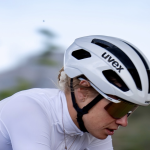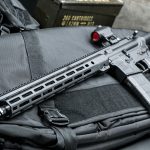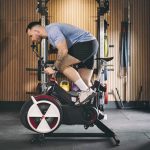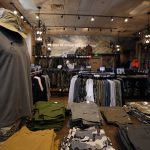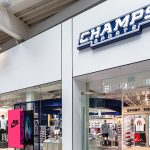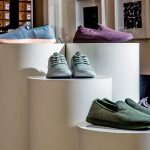Helped by a 10% jump in average selling prices on footwear, Finish Line reported a 91% jump in earnings from continuing operations. On a conference call, Alan Cohen, chairman and CEO, said Finish Line’s improved performance “demonstrates in our Finish Line stores our strategy of focusing on premium products in apparel and in performance sports style footwear being received favorably by our customers.” He also noted that the 4.7% comp gain and 100 basis point product margin increase were achieved despite a 10% decline in inventories on a per square-foot basis.
At the Finish Line chain, comps grew 4.9%. By month, comps increased 10.3% in June with the help of tax refund checks, gained 2.8% in July and grew 2.2% in August. For the quarter, comps increased 6.5% in footwear, but decreased 5.4% in soft goods. E-commerce sales grew 20%, with solid improvement in product margin.
Basketball comps in the quarter were up low-double-digits, driven by brand Jordan across categories. Cohen said the chain continues to see an improved consumer response to Nike performance basketball, led in the latest quarter by the successful releases of Hyperdunk and Sharkley.
“Nike is just doing magnificent,” said Cohen. “They are really hitting on all cylinders in the U.S. Were very excited about what product weve seen and the product that were seeing on a go-forward basis. And this is especially true with regard to the Jordan brand.”
The running category comped up for the quarter with a “significant increase” in product margins. The women’s business was “especially strong.” Shox by Nike was the strongest seller, but Asics, Brooks and Puma also showed solid gains. Under Armour footwear delivered double-digit weekly sell throughs during BTS.
In kid’s, footwear comps were up high-single digits, driven by Jordan, Nike, Puma, Under Armour and New Balance. The gain came despite facing strong Heelys sales during Q207.
Sports style footwear comps were down slightly, but product margins were up due to higher average retail prices and lower inventories. Women’s was up mid-single-digits with strength in high-top footwear from Ed Hardy, Pastry, Baby Phat and Chuck Taylor. Men’s sports style comps were down mid-single-digits. Leading sellers were Lacoste, Chuck Taylor and Nike. Sandals, especially men’s slides, also performed well.
Although softgoods sales were down, gross margin dollars exceeded plan with inventory levels down 27% “as we continue to focus on improving our return on investment until a more meaningful apparel trend develops,” said Cohen. The chain has seen positive sales in premium product including Under Armour, Jordan brand and some Nike apparel. Softgoods now makes up about 13% of revenues, of which apparel is around 8% or 9% with the rest coming from accessories.

At Man Alive, improvement in both men’s and juniors apparel sales was partially offset by the decision earlier this year to eliminate footwear. Cohen said Man Alive continues to transition from hip-hop apparel to multicultural streetwear offerings, as well as to shift from apparel collections to a key item strategy for both men’s and juniors. Although the chain experienced traffic declines, improvements were seen in conversion rates and unit per sales transactions. Nonetheless, Cohen said “it appears this business is more affected by the negative macroeconomic headwinds facing retail in general.”
The 150 basis point improvement in gross margins reflected a 100 basis point increase in product margins, a 10 basis point improvement in shrink, and a 40 basis point improvement in occupancy costs. The product margin increases were driven by fresher inventory and a faster inventory turn. The 100 basis point reduction in SG&A margin was due to improvements in marketing, store supplies, depreciation and freight. On a per-square-foot basis, inventories decreased 10% with Finish Line inventories decreasing around 10% and the Man Alive inventories down 4%.
Net income from continuing operations grew 91.3% to $13.2 million, or 24 cents a share, from $6.9 million or 14 cents, a year ago. Including losses from discontinued operations, net earnings were $13.1 million, or 24 cents a share, for the quarter, compared with a loss of $1.8 million, or 4 cents a share, a year ago.
In the question & answer session, Cohen said much of the 10% gain in average footwear prices is coming from Nike product. “Most importantly were just not seeing any resistance at all,” said Cohen. “I mean, were having good comp sales. Were seeing a pretty dramatic increase in our average unit price. And I guess it really does get down to if the product is good and if it’s product that is compelling to the consumer theyre going to find a way to buy it and that’s what were experiencing.”
He particularly noted that the company was “hitting tremendous sell-throughs on a lot of Jordan product at high prices,” and has long had a healthy Shox business.
But Cohen added that another factor improving ASP has been the lower inventories during the period. “With a much cleaner inventory, there’s a lot less markdown product being sold and whatever markdown product were selling, were selling at higher prices than we might have been selling at in previous years.”
Asked about the promotional climate, Cohen said promotional activity was much less during the second quarter in general due to “much cleaner” inventories across athletic specialty. “I think most everybody, especially in athletic specialty, has done a darned good job of focusing on inventory, getting their inventory in shape. And I think this is going to help us all as we go into third quarter and into the holiday.”
However, he did note that the one “danger” is not knowing how the economy will ultimately impact consumer spending.
“That in and of itself can create problems,” noted Cohen. “If product isnt moving the way it’s anticipated it’s supposed to move, I think most retailers are going to have to take action – maybe that they dont want to take but that theyre going to have to take to do two things: to get the sales they need but, maybe more importantly, to keep those inventories in line.”
Sales in the first three and a half weeks of the third quarter are comping down low-single-digits with continued improved product margins. The sales have not been adjusted for the negative effects of the hurricanes, but Cohen estimated that the impact will wind up being less than a percentage point. He also said part of the weakness in the brief period reflected that a Jordan release this year didnt do as well as a Jordan launch a year ago.
“We know that that does not mean that there’s any weakening or softening in Jordan, it’s something that continually goes on,” said Cohen. “You can run into a great release last year with a release this year that can be very good, but just not as exciting and you can really get a dramatic shift in your numbers.”
But he did note that the 10.3% comp gain in June was boosted by the mailing out of tax refund checks, and the comp gains in July and August (2.8% and 2.2%, respectively) “might be more normal kinds of sales increases or performance increases that arent necessarily being stimulated.”



